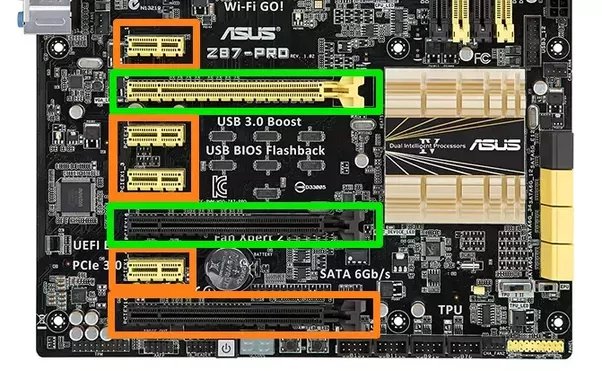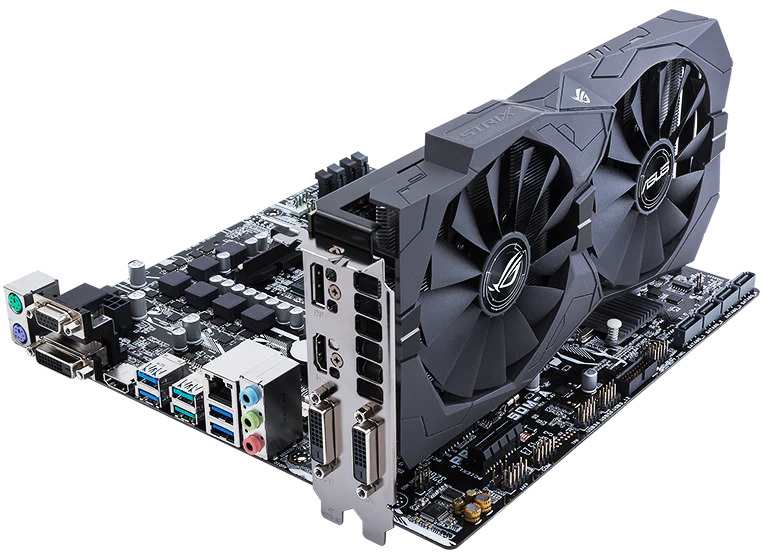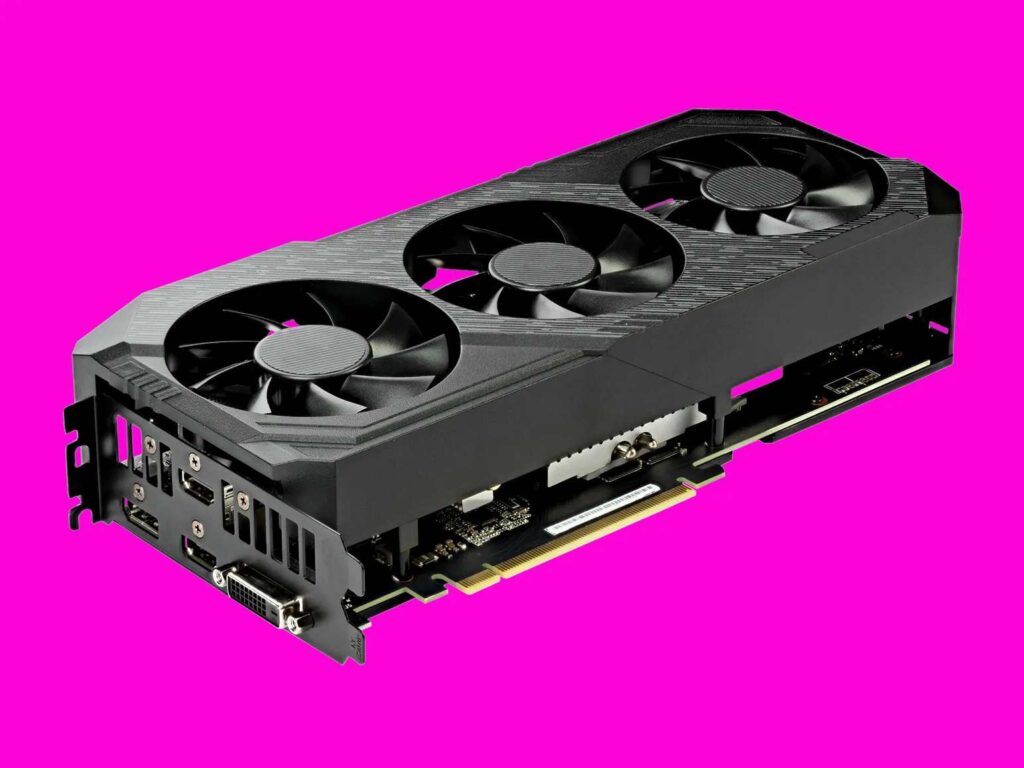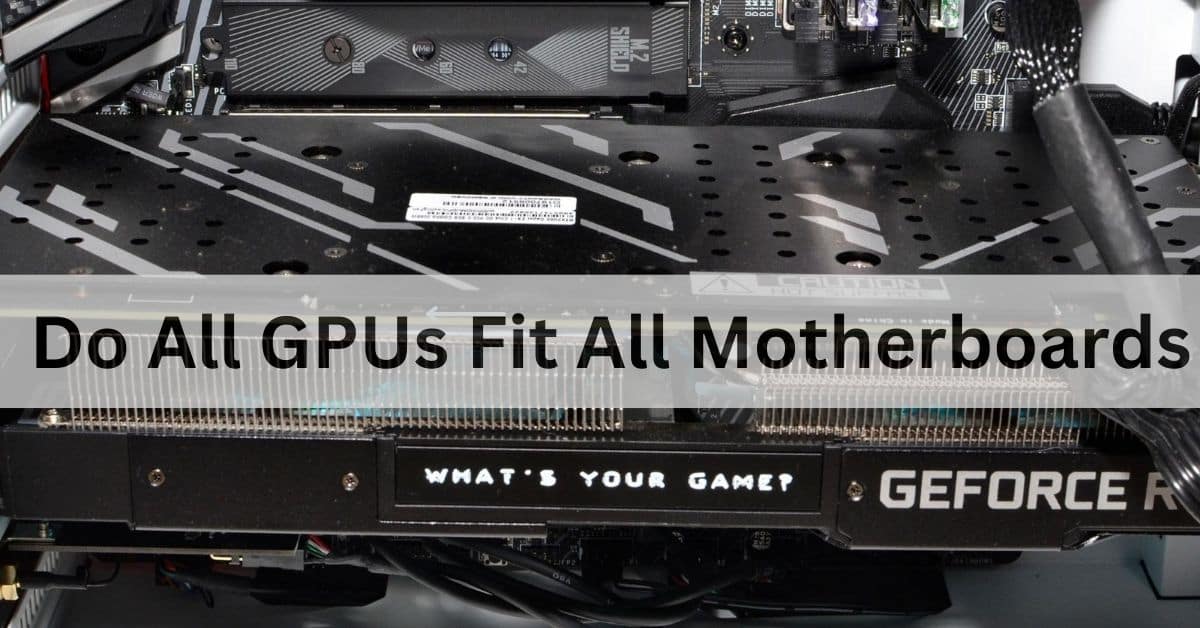When I built my first PC, I wondered, “Do all GPUs fit all motherboards?” After researching, I found that compatibility is key. My experience taught me to check both the motherboard and GPU specifications to avoid costly mistakes.
Not all GPUs fit all motherboards. You need to check the motherboard’s slot type and size to ensure the GPU will work. Always match the specifications for a successful PC build.
In this article, we will discuss “Do All Gpus Fit All Motherboards”.
Table of Contents
What is motherboard and gpu?
A motherboard is the main part of a computer that connects all the other parts, like the CPU and RAM. A GPU, or graphics processing unit, is responsible for creating images and videos on your screen, making it important for gaming and design.
Do all GPUs fit in all motherboards?

Not all GPUs fit in all motherboards. Compatibility depends on factors like the motherboard’s PCIe slot, size, and power supply. Always check the specifications of both the GPU and motherboard before buying to ensure they work together.
Read More: Are All SSD Compatible With All Motherboards – What You Need To Know!
What is a PCIe slot?
A PCIe slot is a connector on a motherboard. It allows you to add cards like graphics cards, sound cards, or network cards. These slots help your computer run better by providing extra features and power.
How do I know if a GPU is compatible with my motherboard?
To check if a GPU is compatible with your motherboard, look at the PCIe slot type. Also, check the motherboard manual for supported GPUs and ensure your power supply can handle the GPU’s power needs.
Will all GPUs work with all motherboards?
Not all GPUs work with all motherboards. You need to check the motherboard’s slot type and size, along with power requirements. Always ensure your GPU is compatible with your motherboard to avoid issues when building or upgrading your PC.
Are all motherboard GPU slots the same?
Not all motherboard GPU slots are the same. Most motherboards have PCIe slots for GPUs, but the number of slots and their sizes can differ. Always check your motherboard’s manual to see what slots are available for your GPU.
Are GPUs limited by motherboard?
Yes, GPUs can be limited by the motherboard. Each motherboard has specific slots and support for certain GPUs. It’s important to check compatibility before buying a GPU to ensure it will work with your motherboard.
Read More: New Motherboard Wifi Not Working – Discover How To Solve Them Fast!
Can I use a small GPU in a large motherboard?
Yes, you can use a small GPU in a large motherboard. As long as the GPU fits in the PCIe slot and is compatible with the motherboard, it will work fine. Just check the power and size requirements before installation.
Are there size restrictions for GPUs?
Yes, there are size restrictions for GPUs. Each motherboard has a specific slot size, like PCIe x16. Also, the GPU must fit in the case. Always check dimensions before buying to ensure a proper fit.
What if my motherboard has no PCIe slot?
If your motherboard has no PCIe slot, you can’t use a standard GPU. You may need to upgrade your motherboard to one that supports PCIe or consider using integrated graphics if your CPU has them.
Does my motherboard supports this graphic card?
To find out if your motherboard supports a specific graphic card, check the motherboard’s specifications. Look for the PCIe slot type and ensure it matches the card. Also, confirm the power supply can handle the graphic card’s needs.
Motherboard/CPU and GPU compatibility:
Motherboard, CPU, and GPU compatibility is crucial for a working PC. Ensure your motherboard has the right slots and supports the CPU and GPU you choose. Always check the specifications to avoid issues when building or upgrading your system.
Graphics card and motherboard compatibility?

Graphics card and motherboard compatibility is important when building a PC. Not all graphics cards fit every motherboard. Always check the specifications to ensure the GPU will work with your motherboard for a smooth setup.
Read More: Are Gigabyte Motherboards Good – The Ultimate Guide 2024!
What GPU can my motherboard support?
To find out what GPU your motherboard can support, check the motherboard’s manual or website for compatibility details. Look for the PCIe slot type and size, as these will help you choose the right GPU for your system.
Do I need a specific power supply for my GPU?
Yes, you need a specific power supply for your GPU. Check the GPU’s power requirements and ensure your power supply has enough wattage and the right connectors. This helps your GPU run well without problems.
How can I check if my GPU is compatible with my motherboard?
To check if your GPU is compatible with your motherboard, look at the motherboard’s PCIe slot type and the GPU’s connector. Also, check the power supply and size of the GPU to ensure it fits in your case.
Can I use an older GPU with a new motherboard?
Yes, you can use an older GPU with a new motherboard, but make sure they are compatible. Check the motherboard’s slot type and the GPU’s size to ensure they will work together without issues.
What about integrated graphics versus dedicated GPUs?
Integrated graphics are built into the CPU and are good for basic tasks. Dedicated GPUs are separate cards that provide better performance for gaming and heavy tasks. Choose based on your needs and the programs you use most.
Is it possible to upgrade my GPU later?

Yes, you can upgrade your GPU later. Most motherboards allow you to change the GPU as long as it fits and is compatible. Just make sure your power supply can support the new graphics card before upgrading.
Read More: Do Motherboards Come With Bluetooth – What You Need to Know!
Would any Graphics card fit onto a motherboard?
Not all graphics cards fit onto every motherboard. Each motherboard has a specific slot type and size. Always check the motherboard’s specifications and the graphics card requirements to ensure they are compatible before making a purchase.
FAQs:
1. What factors affect GPU and motherboard compatibility?
Compatibility depends on the motherboard slot type, size, and power supply. It’s essential to check these specifications to ensure a proper fit.
2. Do All GPUs Fit All Motherboards ?
You can use a new GPU with an old motherboard if the slot type matches. However, older motherboards may not support the latest graphics cards’ features.
3. How do I check my motherboard’s GPU slot type?
You can check your motherboard’s manual or visit the manufacturer’s website for detailed specifications. Most modern GPUs use PCIe slots, commonly found on motherboards.
4. What happens if I try to fit an incompatible GPU?
If you try to fit an incompatible GPU, it may not physically fit or work correctly. This can cause system errors or even damage to the components.
5. Do I need to upgrade my power supply for a new GPU?
Upgrading your GPU may require a stronger power supply. Check the GPU’s power requirements and ensure your power supply can meet them for proper performance.
Conclusion:
Understanding GPU and motherboard compatibility is crucial for building or upgrading a PC. Always check the specifications of both components to ensure they match. This not only helps in avoiding installation issues but also enhances overall system performance. Taking the time to verify compatibility can save you from potential problems and expenses down the line. With the right information, you can confidently choose the right GPU for your motherboard.
